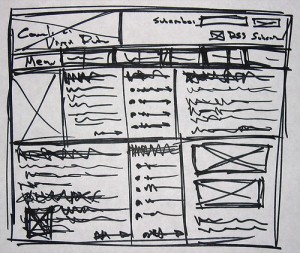The ‘cool, shiny new thing’ that sent marketers crazy in 2009 was Twitter. (This year, it’s mobile apps by the way.) Why? Because although Twitter launched in 2006, it exploded into the mainstream in late 2008/early 2009. And brands were champing to get a piece of that action.
Having just spent three days at Search Engine Strategies London, Twitter is still clocking up a lot of mentions from SEOs and businesses, etc, who worry about how best to involve with it. Well, you'll see a rise in this engagement, especially now that it is being crawled by Google for real-time search results and because marketers are realising the value of a recommendation on Twitter.
So rather than regurgitate whole speeches, here’s what SEOs and marketing types from SES London are saying about Twitter for 2010 – at least in the sessions I attended:
1 Real-time search: be wary of the value of Twitter
230 million pieces of content are published per day by user. 40% of searches have a real-time component. Potential $40 billion market. But:
- 90% content is created by 10% of the people (Source: Harvard Business Review)
- 74% of Twitter content is produced by 5% of the users.
- Is 5% really representative of everybody?
Aaron Kahlow opening keynote: Is Social Media the Future of Search
2 How McDonald’s operate their Twitter
CoTweet allows people within organisations to use the same Twitter account – as used by McDonald’s.
Aaron Kahlow opening keynote: Is Social Media the Future of Search
3 Should you spend time and money on Twitter?
Who is my audience? Are they on Twitter, if not don’t spend (time) there.
Aaron Kahlow opening keynote: Is Social Media the Future of Search
4 Has Twitter peaked?
Twitter is not accelerating as fast now, it has peaked on the growth rates. The vast majority have less than 5 users.
Rand Fishkin, Social Media Best Practices for Marketers Inside the Brand
5 Can Twitter drive traffic and sales?
Social network profiles (including Google Profile) drive traffic. Active Twitter users, Dell, also reported in excess of $3m in sales in 2009. Its Twitter is essentially just a promo shop, eg, 15% off at any Dell Outlet – which leads to direct click-thu sales.
Rand Fishkin, Social Media Best Practices for Marketers Inside the Brand
6 What are the biggest problems for marketers using Twitter?
Analytics, KPIs, how does it impact the bottom line. Also, getting followers in the market you are going after.
Mike Lewis, Business Tweeting: I think Twitter is working, but I can't prove it!
7 How many Twitter accounts to set up?
One brand Twitter stream can include: PR, service, sales, crisis, recruitment, product.
Mike Lewis, Business Tweeting
8 What’s the ROI of Twitter?
ROI of Twitter = traffic to site, buzz, inbound links for SEO, reduced service costs, leads, sales. (All trackable ROI.)
Mike Lewis, Business Tweeting
9 Twitter – trend towards automation
Fact – individuals are adopting Twitter, but what about brands? Great thing about Twitter is that brands can connect one to one. But there is a trend of moving towards automation.
Mike Lewis, Business Tweeting
10 Check your bounce rate from Twitter traffic
When analysing your online stats, compare traffic from different sources. Eg, from blogs, it usually has high context, expectancy is there, users know what they want to see, and spend more time on site. Twitter – may generate high traffic but can also have a high bounce because it lacks space to create context.
Matthew Bailey, Introduction to Search Engine Optimisation
11 Twitter 101 for brands
- Don’t overthink it, be personable
- Share info/links
- Listen
- Use hashtags to organise and search
- Twitterlists are useful if you are following hundreds and want to discover new people
- Tweetdeck – organises your Twitter use
- Scheduling tweets – Future Tweets – good for client use
Lisa Myers, Social Media 101
12 Tools for monitoring social media
Free Social Monitoring Tools:
- www.socialmention.com
- www.tweetbeep.com
- www.tweepmeme.com
- www.klout.com
- www.blogpulse.com
Paid Monitoring Tools:
- www.trackur.com
- www.radian6.com
Lisa Myers, Social Media 101




 Later today I'm off to my fourth
Later today I'm off to my fourth 